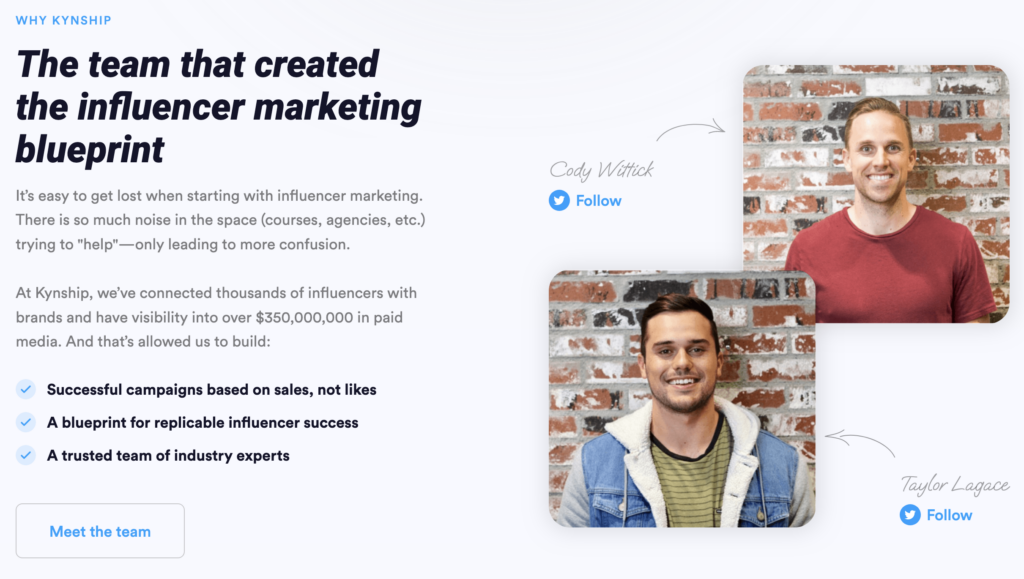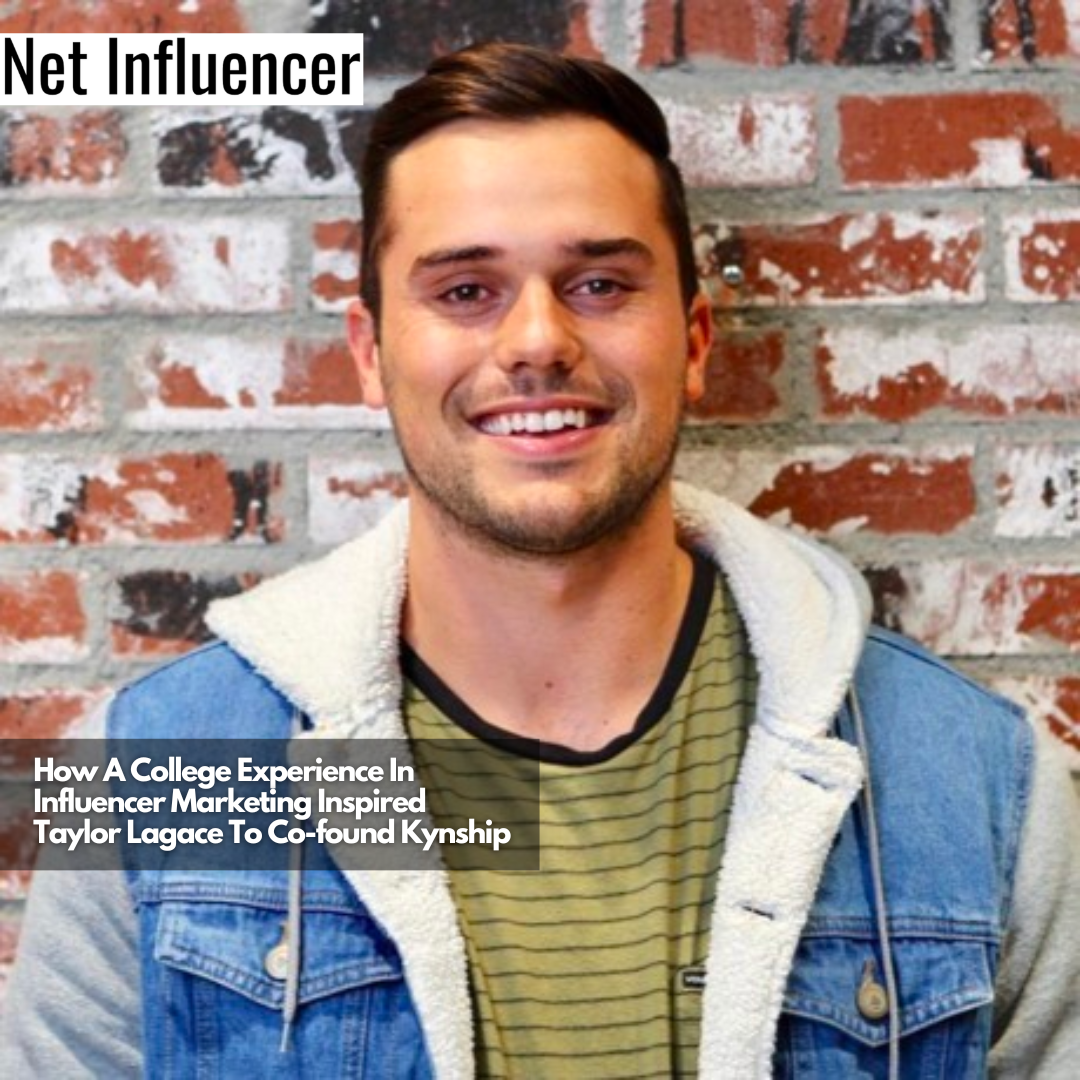Technology
How A College Experience In Influencer Marketing Inspired Taylor Lagace To Co-found Kynship
Taylor Lagace saw the potential of influencer marketing when he was in college. He gained more experience in the industry after graduating. With years of experience, he co-founded Kynship to help brands and influencers build relationships.
Taylor Lagace saw the potential of influencer marketing when he was in college. He gained more experience in the industry after graduating. With years of experience, he co-founded Kynship to help brands and influencers build relationships.
In this article, Taylor gives details on his journey in the influencer marketing space and what makes Kynship different.
About Taylor Lagace
Taylor Lagace is one of the co-founders of Kynship, an influencer marketing agency for direct-to-consumer or DTC brands. Kynship has helped several brands through their 3-phrase blueprint that involves product seeding, influencer-generated content, and Facebook and Instagram ads.

How Taylor Started in Influencer Marketing and His Inspiration for Co-founding Kynship
Taylor first got into influencer marketing when he was in college. Back then, he was given the opportunity to play football and had Sean Justin Combs as one of his teammates. The two started an events company, and Sean was the face of it since he was already an influencer.
That experience showed Taylor the power of influencer marketing. He recalls, “He [Sean] would pretty much just post about an event, and all the ticket sales would be sold overnight and generate a lot of revenue.”

Initially, Taylor didn’t want to do influencer marketing long-term, but his college experience piqued his interest. Taylor transitioned to an NFL marketing agency after college and then transitioned into the digital marketing side of things.

He went to a paid media agency called Common Thread Collective, where he worked with micro-influencers and repurposed content for paid media and Facebook ads. Four years ago, Common Thread Collective seed-funded Taylor and his team, and they started Kynship.
How Kynship Helps Brands Create Meaningful Partnerships With Influencers
Kynship steers away from using the pay-per-post model in influencer marketing. This model has been used by countless brands for years, but Kynship believes that this model is almost dead.
Instead, Kynship uses a different approach to connect brands with influencers. Taylor explains, “So every month, the way we’re coming alongside brands is we identify at least 500 influencers per month per brand. The influencers that we’re identifying, we’re reaching out to them with a message along the lines of, ‘Hey Jessica, we think you’re a great brand fit. [We] absolutely love the content you consistently put out. I think you’ll love our product, and we want to send it to you, no strings attached.’”
According to Taylor, this statement simply implies that there’s no expectation from the influencer to post about the product or endorse the brand. He adds, “So instead of leading with, ‘Hey Jessica, love your content. We want to pay you x amount for a post,’ we’re saying, ‘Hey Jessica, we want to send you our product with no strings attached because we love your content. Let us know what you think.’”
The strategy Kynship uses on behalf of the brand is called seeding. It involves planting a seed to build genuine relationships with influencers. Over time, this will lead to cost-effective relationships that allow brands to create mass organic distribution and repurpose content in various paid media funnels.
Identifying the Right Influencers for the Right Brand and the Right Campaign
The influencers in Kynship go through a pre-vetted process with the help of a third-party company, Aspire. Taylor shares how they choose the right influencers for brands stating, “We meet with the brand and get aligned with them as who is your customer. Then we deep dive with that customer and identify influencers based on who influences that customer and who represents that customer.”
“So then, we’re looking at what makes them a brand fit, a persona, a demographic fit. And then, above all else, what we’re looking for in identifying these 500 creators is their video content creation ability. We value that as the number one variable of who we’re putting in front of the brand,” Taylor adds.
Aside from that, many things go into the decision to identify influencers for the brand. Taylor shares that they have to consider the articulateness, charisma, and ability of the influencer to capture the attention of the audience in the first three seconds of their videos.
Measuring the Success of These Partnerships
“The thing we’re valuing most here is the content organic distribution. To give you average numbers, when we’re reaching out with no strings attached messages to these 500 influencers, on average, 100 influencers will opt to receive the product. And then, out of the 100, an average of 30 influencers will end up posting two to three each. So 30 influencers, 60 to 90 posts, all for the costs of sending your products out,” Taylor states.
Given the outcome, it’s a pretty good investment, as brands will only have to pay for the costs of sending their products. For instance, if they send out products worth $20 each to 100 influencers, they’ll only spend $2,000. With this amount, brands will have 30 influencers posting about their products 60 to 90 times.
Taylor adds, “If you go to the agency, I’m sure asking for 30 influencers to make 60 to 90 posts in total will cost a lot more than two grand. So that’s the numbers on the organic side. We also look at the vanity metrics, including the total views of the content, and look at the comment, the likes, all that sort of engagement.”
But for Kynship, content is the most valuable thing. They correlate content directly to the ROI when repurposing it into paid media.
Taylor says, “We can get very single metric within the Facebook ad account dashboard to see how this content is performing when running it as an ad, seeing the return on ad spend, seeding the cost per acquisition, really gauging the performance success based on that.”
Kynship’s Success Stories
When it comes to successful partnerships created by Kynship, Taylor presents two case studies because each land on the opposite sides of the spectrum. One case study was on behalf of a brand that Kynship came alongside and then, after four months, scaled from zero to a million dollars in profit.
Taylor states the success of that partnership is due to influencer seeding and Facebook ads. He shares, “What, how, and what did we do? The only channels we were using were influencer seeding, as well as Facebook ads. All the content in Facebook ads was supplemented by influencer posting from our seeding efforts.”
In the first four months, over a thousand influencers have posted on behalf of that brand. In total, the brand received more than 3,000 pieces of content from Kynship’s seeding effort.
After reaching out to 500 influencers, receiving responses from 100 influencers to opt-in, and seeing 30 influencers post content, Kynship repurposes that content into Facebook ads. This approach ultimately allowed the brand to scale from zero to a million quickly.
Another case study Taylor shares was with M&M, which has already become a household name. What Kynship did for M&M was to build genuine relationships with influencers through seeding. He adds, “We were able to get a ton of content organically distributed from their accounts and was able to repurpose that content into paid media.”
“For Mother’s Day, we increased the revenue by 256%, and then for Father’s Day, we increased revenue from the previous year by 458%. So massive increases in performance from the efforts of influencer seeding,” Taylor adds.
How Kynship Stays Up to Date With the Newest Trends and Practices in Influencer Marketing
Kynship’s approach to staying relevant in the ever-changing influencer marketing space is to study the best of the best. They lean into influencers as creative marketing agencies because there’s no one that’s in it as much as them; they understand the algorithm inside out.
Taylor adds, “And the bests of the best are who we’re trying to identify on behalf of these brands. So, whoever’s getting the most engagement, the most views, and the most captivating content that works well in pad media. We want to identify those people as much as possible because they’re constantly staying up to date with the trends. Otherwise, their performance as an influencer would decline.”
Kynship consistently identifies influencers with growing accounts and engagement rates as they align with the trends. These individuals know what’s going on in TikTok, Instagram, YouTube, and other social media platforms, and Kynship leans into them as a guide.
Role of AI and Technology in Kynship
Presently, artificial intelligence and technology don’t have a significant role or impact on Kynship. Taylor shares that even their identification process uses a white glove approach.
He says, “We’re identifying based on our subjective opinions, really. So, it takes one by one. and then in our communication flow, there are obviously templates involved in that.”
Taylor mentions that they can use AI in making those templates but worries that people can see through that. He wants Kynship to have that human touch, even if that means having some human error involved. He continues, “I think people like to see that this isn’t some AI bot talking to them. So if there’s a grammatical error, to be honest, I think some people might purposely want to do that just to show that they’re real.”
“There’s no AI repurposing the content into paid AI. So truly, not all that much. I think we should try to keep a space as human as possible because this is a channel where we’re working with humans at the end of the day. So I would probably lean into using less, using it where you can but keep it as human as possible,” Taylor shares.
How the Influencer Space Will Evolve in the Future
For Taylor, the influencer space is already evolving as people use too many terminologies today. He explains, “The transition of people saying influencer or creator, is it the same thing? How do you define ambassadors? I just think everyone, every single human being in the world, will be defined as an influencer. I think we’re all influencers, we’re all creators at the end of the day.”
Additionally, Taylor sees influencers will continue to remain valuable for their content creation ability, and more brands will understand the value of their organic distribution and audience.
What’s Next for Kynship
Kynship will continue building relationships with influencers by going against the transactional model. It’ll continue to prove and educate as much as possible through different vehicles, such as this article, there’s a better and more effective way of fostering relationships with influencers.
“And that way is through building relationships by giving first and not asking for anything in return. By doing so, more is going to blossom out of that relationship in a genuine, authentic way,” Taylor says.
Taylor recognizes that authenticity has been used redundantly in the influencer space. But no one wants to put in the work to garner that authenticity at the end of the day.
Taylor concludes by reiterating, “So education, trying to double down on that as much as possible and go against the current model that’s generally accepted.”

















